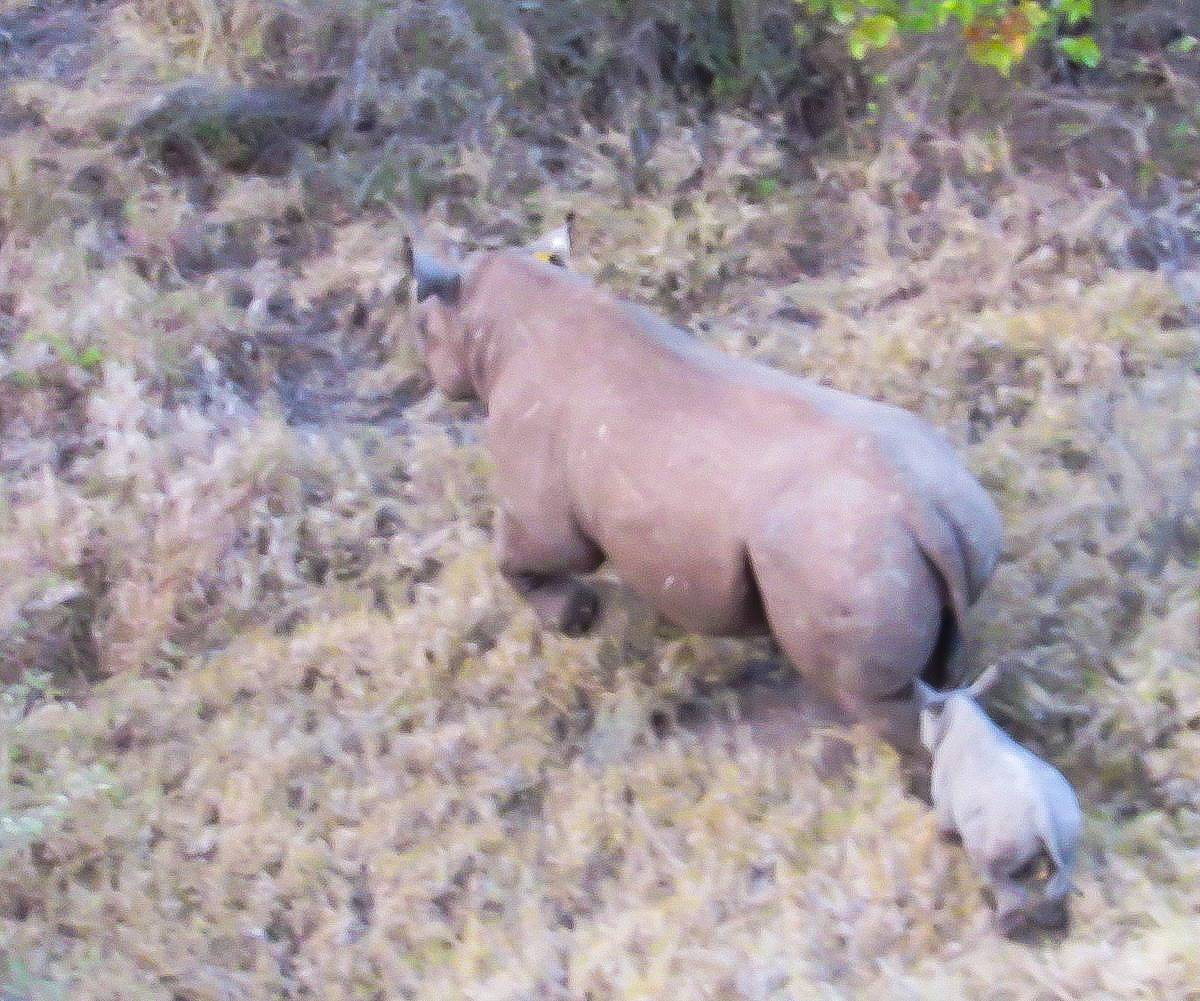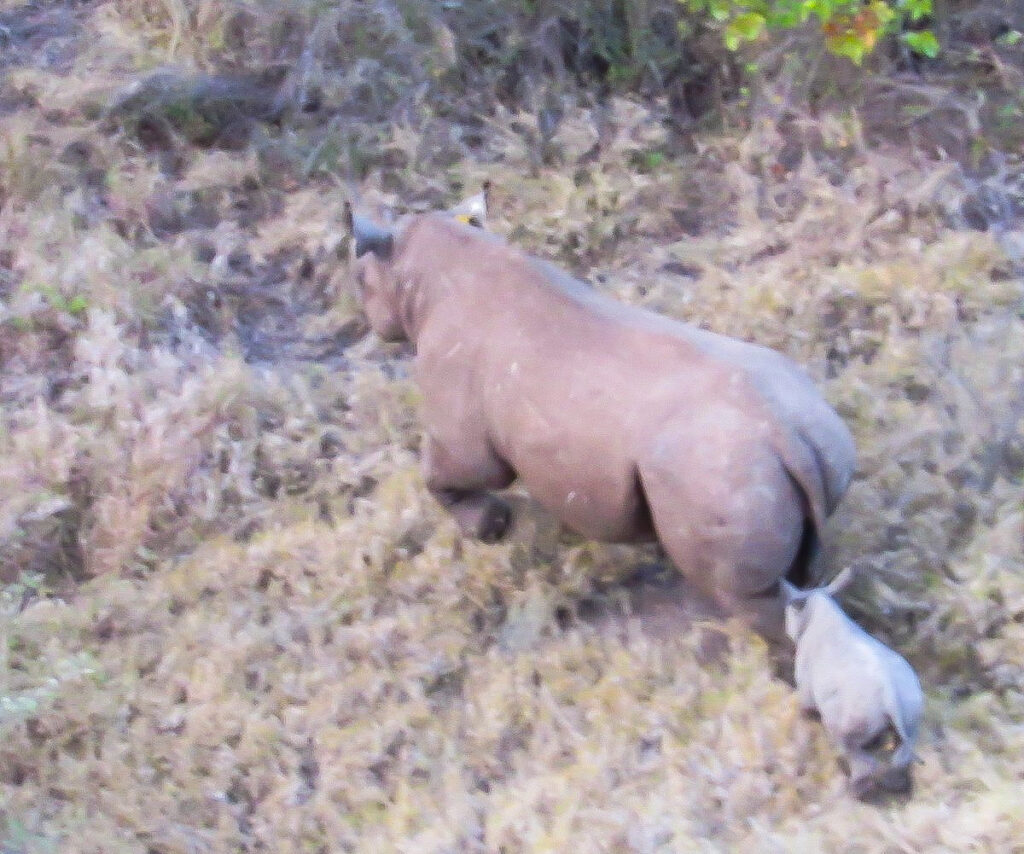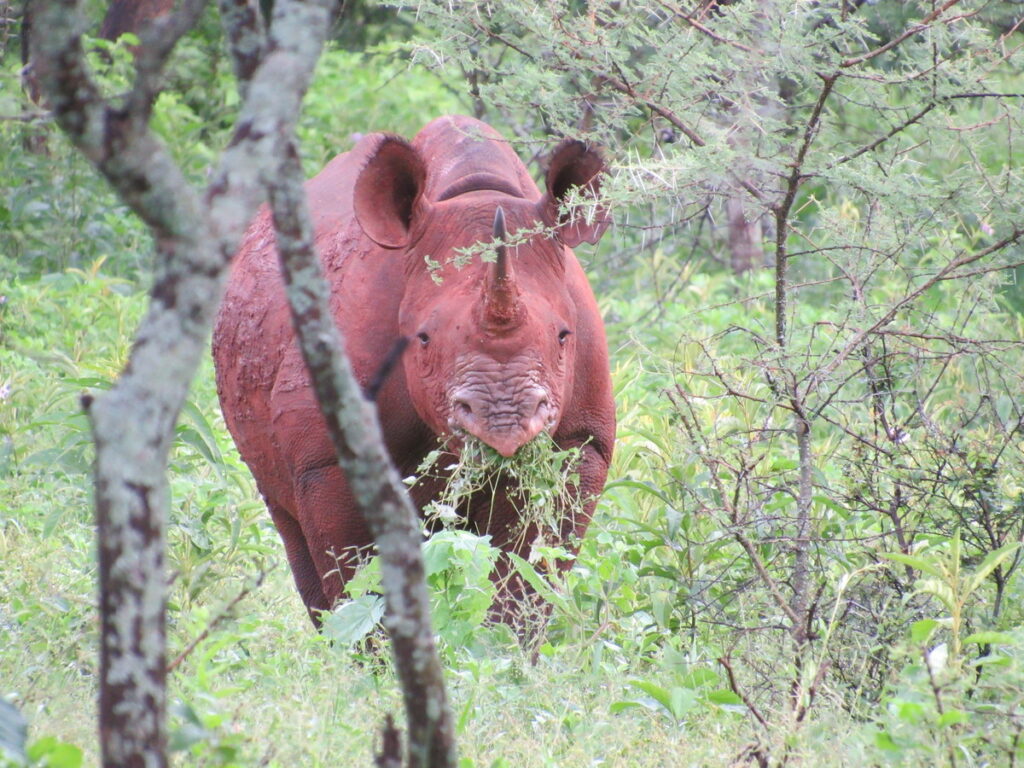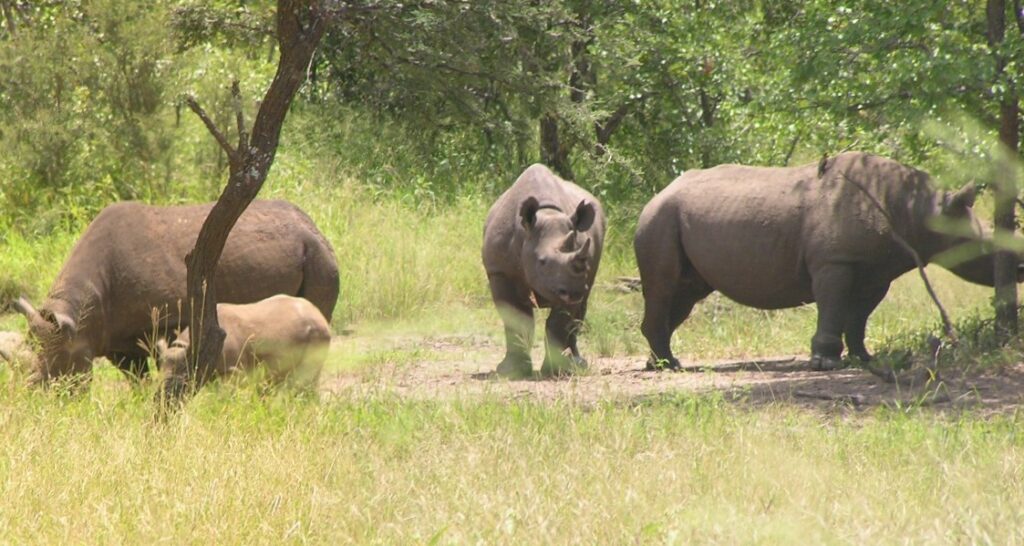Belinda and Other Rhinos in Zimbabwe’s Bubye Valley are Thriving


All photos provided by Lowveld Rhino Trust.
It’s widely considered that seven years is the average age at which wild black rhino females give birth to their first calf. “Belinda,” a black rhino monitored by the Lowveld Rhino Trust (LRT) in Zimbabwe’s Bubye Valley Conservancy (BVC), was only five years and one month old when she gave birth to her first calf, seen here for the first time during LRT’s June 2022 rhino management operation.
In fact, 3 other BVC rhinos gave birth for the first time in 2022 – and their combined average age at the time of birth was 5.6 years old. With a gestation of 15-16 months, that means the BVC rhinos are mating and conceiving for the first time at just over 4 years old – 20% younger than the historic average for the species.
So why are the black rhinos in BVC reproducing so much earlier than is normally seen for this species?
One factor is likely nutrition. BVC has seen exceptional rains the past few seasons. With good food availability and minimal browsing competition, the young rhinos in Bubye Valley are able to increase in body size faster than they generally do in other areas.

Another significant factor is likely the settled social structure within the BVC rhino population. A young female like Belinda has grown up in contact with the males in her area and will have already established who she is comfortable with and who she is not. This familiarity makes it more likely she will be willing to mate at a younger age, unlike what is often seen in translocated populations where breeding performance falls due to social disruption.
A common misconception about black rhinos is that they are a solitary species, but they do form strong social bonds with other rhinos. Social dynamics within a rhino population dictate access to territory, breeding opportunities and even food and water – and understanding those dynamics is critical to managing the population.






For example, when 15 black rhinos were moved from Bubye Valley Conservancy to Gonarezhou National Park in 2021, LRT’s knowledge of the conservancy’s black rhino social hierarchy was essential to selecting which individual rhinos would be best to translocate. They had to carefully consider not only which rhinos would have the greatest success moving and establishing a new population in Gonarezhou, but also which individuals’ absence would cause the least amount of social disruption in the remaining BVC population.
Removing the wrong rhinos from a population could upset the established social balance and have long-lasting impacts on the reproduction rates – and growth – of that population. This highlights a devastating ripple effect that can be caused when a socially dominant rhino is poached – a sudden death of any one rhino impacts much more than that one individual. Fortunately, rhino poaching in Zimbabwe has declined over the past few years, aiding in the nation’s positive rhino growth rate. With over 1,100 rhinos, Zimbabwe has the 4th highest total rhino population of any African country. Bubye Valley’s population of black rhinos is now one of the largest in the world.
Belinda and the other younger first-time rhino moms are evidence that conditions in BVC are optimal, and thanks to the collaborative efforts of Bubye Valley Conservancy and Lowveld Rhino Trust, this key population of rhinos continues to thrive.

Learn more about how your support benefits our work in Zimbabwe.
